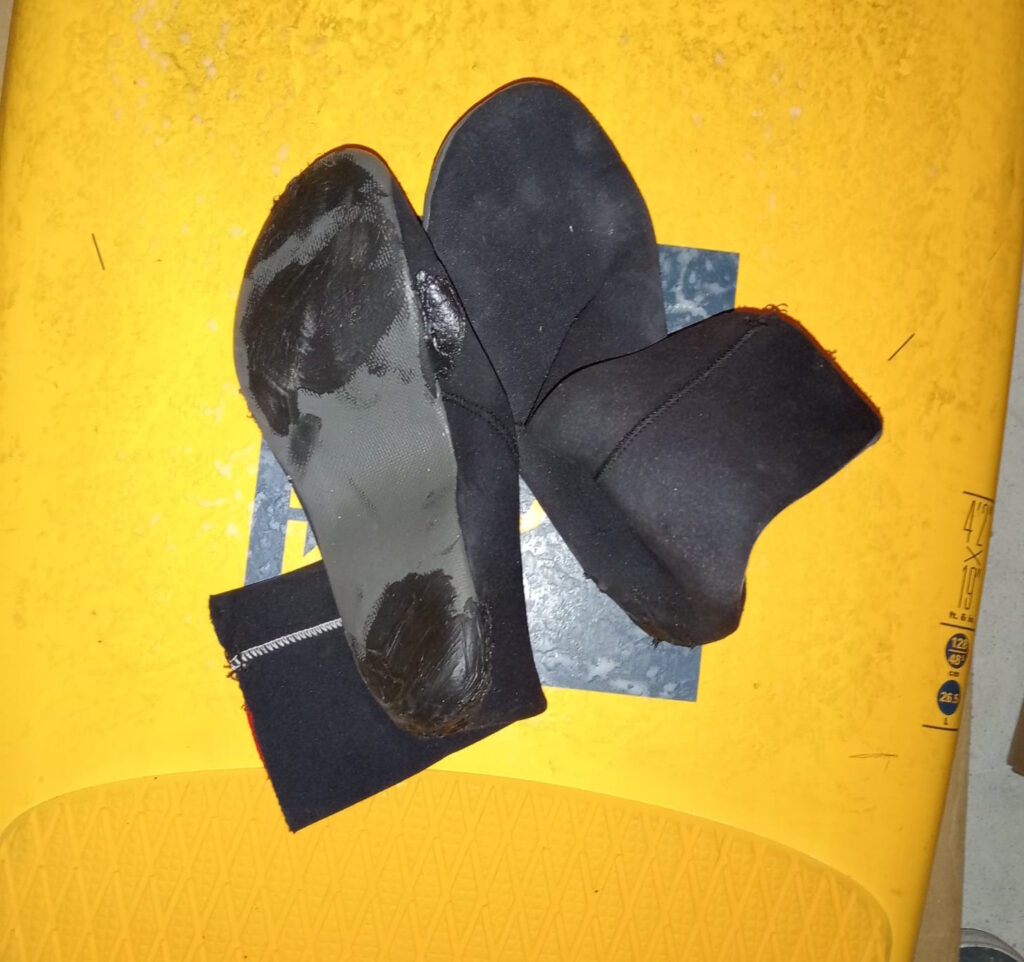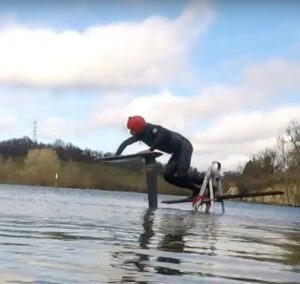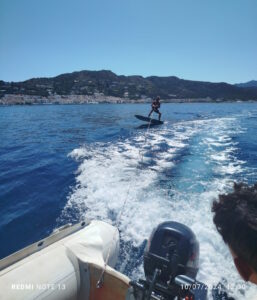In the safety equipment section we talked about how you might need some foot protection to avoid cuts if your foil When I started, I noticed improvement the day I switched to a board where I could pump barefoot, but when winter came, I had to wear water shoes. The surprise came when summer came, and I didn’t feel as comfortable barefoot. I felt like the grip wasn’t as good, so now I pump with water shoes with very, very thin soles and no insoles.
- Going barefoot or with low soles gives you the best contact with the board for balance.
- It gives you less height (even if it’s only half a centimeter), which helps with balance a little.
- It gives you better transmission to the board. I once tried doing it with shoes, and the cushioning between the board and feet was very noticeable; the pumping was transmitted with less power, even though they weren’t especially cushioned shoes.
- The advantage of going barefoot is that it allows you to correct your foot position more easily by dragging it on the board.
But it’s not always easy to go barefoot. It could be that your dock is slippery, in which case you wouldn’t be able to make strong starts, but rather accelerate gradually, although for this you’d need a dock long enough. Another option I’ve seen people do is to put a wet towel on the ground to prevent slipping.
When you start doing long runs, it’s also a good idea to have some booties so you can leave anywhere without hurting your feet and walk back.

Your board may be too slippery for your feet. If it’s homemade, sprinkle sand on it after applying the varnish or epoxy. If it’s a surfboard, you’ll need to apply a good amount of wax every day. A board with EVA foam is the best; it has enough grip to prevent slipping and at the same time allows you to correct your foot position. But it’s not perfect either. It’s not suitable for beginners with a sunken foil, and I feel safer with booties these days.
If you can’t keep your board or dock from slipping, you’ll have to use a lot of sand to prevent it from slipping.




